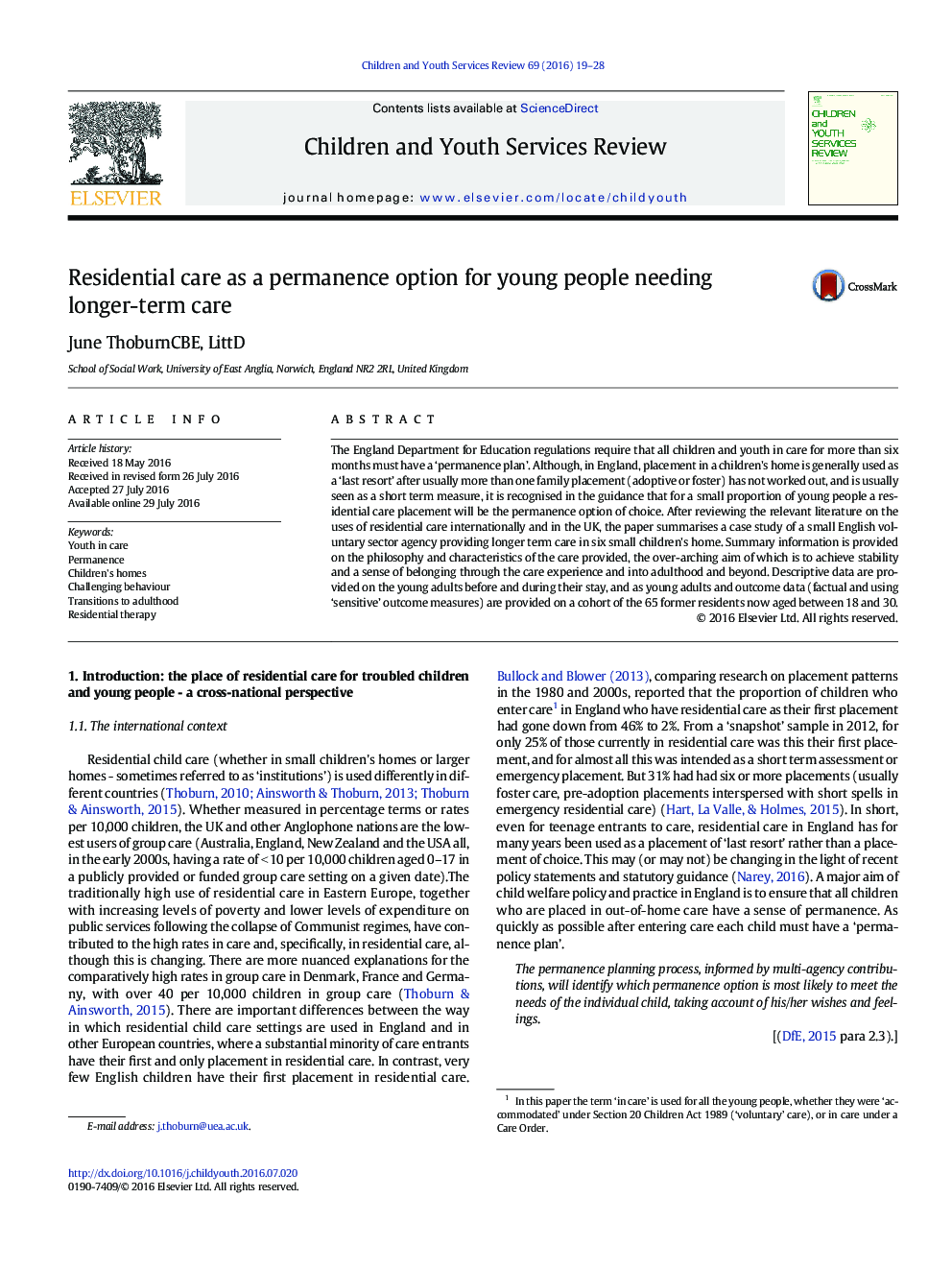| Article ID | Journal | Published Year | Pages | File Type |
|---|---|---|---|---|
| 345768 | Children and Youth Services Review | 2016 | 10 Pages |
•Group care is mainly used in UK as a short term intervention or in an emergency•In England it can be used in appropriate cases as a planned ‘permanence’ option•The case study and evaluation demonstrate that it can provides a sense of belonging•Children need clarity about intended duration if they are to put down roots•Continuity of relationships and dependable support into adulthood are essential
The England Department for Education regulations require that all children and youth in care for more than six months must have a ‘permanence plan’. Although, in England, placement in a children's home is generally used as a ‘last resort’ after usually more than one family placement (adoptive or foster) has not worked out, and is usually seen as a short term measure, it is recognised in the guidance that for a small proportion of young people a residential care placement will be the permanence option of choice. After reviewing the relevant literature on the uses of residential care internationally and in the UK, the paper summarises a case study of a small English voluntary sector agency providing longer term care in six small children's home. Summary information is provided on the philosophy and characteristics of the care provided, the over-arching aim of which is to achieve stability and a sense of belonging through the care experience and into adulthood and beyond. Descriptive data are provided on the young adults before and during their stay, and as young adults and outcome data (factual and using ‘sensitive’ outcome measures) are provided on a cohort of the 65 former residents now aged between 18 and 30.
